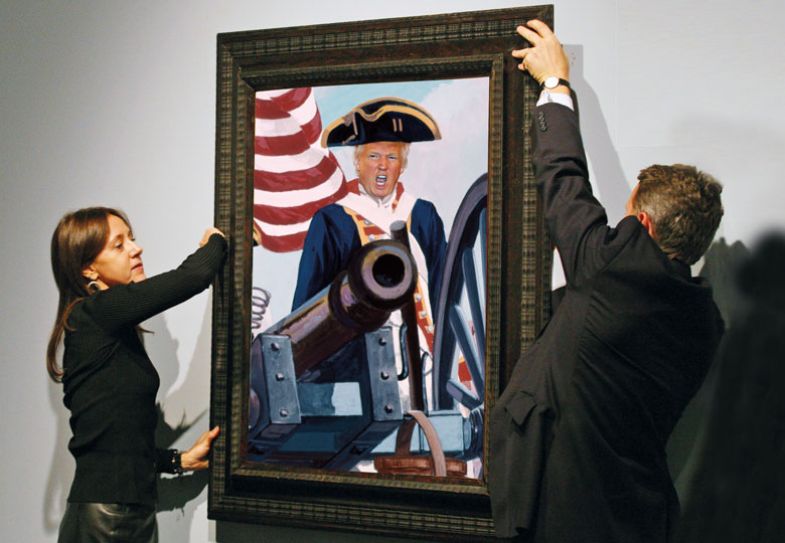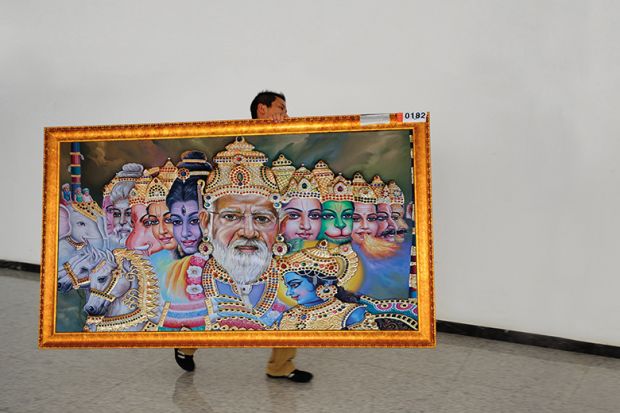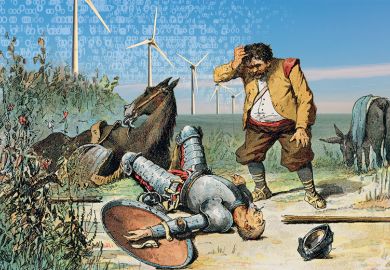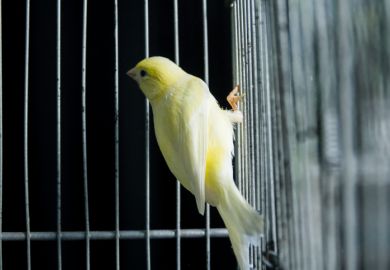Sometime in July 2018, I received an unexpected email from a stranger. It was a warm and enthusiastic message from a member of India’s newly constituted Committee on National Education Policy.
The message was about a brief book I’d published earlier that year on the possibilities of interdisciplinary liberal arts education in a nation long trapped between a colonial-bureaucratic model of arts and science education centred on examinations and a breathless fetish for engineering and medicine. I was invited to take part in a discussion of the book at a two-day conference in Bengaluru, whose participants included almost the entire committee, including its chair, a former head of India’s leading space research organisation.
Among the group of educators drafting the NEP were a young Fields Medal-winning mathematician of Indian origin who was a professor at an Ivy League university. As a group, I found them enthusiastic about interdisciplinary liberal arts education that sought to combine range with depth, a radically new direction for post-secondary education in India. My experience there was warm, pleasant and fulfilling. But I was unsettled by the obvious and pervasive presence of leading members of the student wing of the political party in power in Delhi. For a conference that had declared no political affiliation, it was unexpected and a little unnerving.
When a draft policy was published in 2019, a loose baggy monster that was as ambitious as it was full of holes, it felt striking to see a persistent focus on a more capacious multidisciplinary education at the undergraduate level. New winds seemed to be blowing across a nation for which 70 years of independence had offered scant choice beyond a single-discipline study, whether in the fundamental arts and sciences or in the holy grail of Indian careers, engineering. Nevertheless, my uneasiness turned into full-blown shock.
What felt like the American model of interdisciplinary liberal arts was dressed in the unmistakable language of high-Sanskritic Hinduism. The liberal arts were Kala (a Sanskrit term that literally translates into “art”), but the India depicted in the policy didn’t seem to have any other tradition of thought or learning – no trace of Islam, none of Christianity and colonialism, no signature of any other regional or marginal traditions of the great mammoth of Hinduism. There was only a rarefied, Brahminical version that had magically become the whole “Indian way of thinking”.
But it appeared that the saffronwashing of the multidisciplinary content had primarily happened on the plane of language, form and rhetoric. The ideological battle over the arrangement of disciplines, in the final instance, had resulted in a humanistic approach that would soon come to pervade the entirety of higher education policy.
It was a disenchanting teaching of lessons we have all learned by now, as we look desolately ahead at national elections in some of the largest democracies in the world later this year. If Donald Trump makes his way back to the White House, he will seek to deliver on his promise to create an “American Academy”, a free national online university funded by “taxing, fining and suing excessively large private university endowments” to the tune of billions of dollars to provide competition with “very costly” four-year universities. Campus activism and ideological debates around the Israel-Palestine conflict form his immediate context, but he has made no secret of the fact that his plan is to create an antidote to “woke universities”, in which political awareness will come via the humanities and the social sciences.
A large part of the humanities and the imaginative social sciences is about identity. Conversely, large elements of our identity are embedded in these fields of knowledge. These are the identities we seek for our private and public selves and, crucially, the identities that we seek to pass on to posterity through teaching, curricula, educational policy and in the work we publish on academic and public forums. In the two countries I’ve known well – India and the US – I’ve experienced the adaptation and exclusion of identities, both conscious and unconscious, in humanities research and teaching in many direct and indirect ways. Being on the margin in one situation – a brown non-Westerner – has sharpened my consciousness of privilege in the other as an educated, urban, upper-caste Hindu man.
In the US, the previous edition of this battle seemed to be about culture wars – in part, by the dread of the onslaught of mediocrity in the name of multiculturalism. The sanctity of the canon has doubtless mutated over the past few decades, as have the tone, pitch and locus of the culture wars. The formulation of Classics as a Euroethnic discipline has been interrogated by the work of Dan-el Padilla Peralta, and Emily Wilson has performed her Homer translations on YouTube with a cardboard crown, cat ears and a dishevelled wig.
But if social media has nourished a cancel culture that has seen some people refuse to read texts by anyone who doesn’t look like them, real power in the world of policy and curriculum has almost completely swung to the other extreme. Legislative, pedagogic and administrative powers in many parts of the US have now become unrelenting in their multi-pronged attack on critical race theory (CRT). By the end of last summer, governors of eight states had reportedly legislated for curriculum-content restrictions; governors in five states signed into law restrictions on diversity, equity and inclusion; and lawmakers in 12 additional states have been considering similar bills. As of now, a total of 44 states have taken measures or are considering ways of restricting the teaching of CRT in schools and colleges.
These attacks on CRT in the US and on the pluralist reality of the state in India, are both, on one level, about the discomfort of the privileged. That immediately becomes a narrative of denial, and the perverse and disturbing fact is that the power of the humanities to rewrite history is indispensable to this very denial. The most lasting – and perhaps the most dangerous – evidence of the power of the humanities and the imaginative social sciences to make and break meaning, symbol and identity is that the ugliest wars derive from them.
Some of our most significant humanists, at various moments of generative and debilitating crises in these disciplines, have drawn attention to this strange and disembodying truth. In Humanism and Democratic Criticism, Edward Said pointed to the widely known investment of the CIA in the cultural life of the US with the aim of fighting the Cold War, citing Clark K. Kuebler and Frances Stonor Saunders' references to “an ideological war” and “the Cultural Cold War”. Recalling some of the controversial cases of funding and sponsorship from those decades, Said nevertheless went on to admit that “much of what was done and funded ideologically in the name of freedom, democratic values, and fighting communist totalitarianism, contributed significantly to humanistic praxis.”
The reasons behind these sponsorships were obvious: the ideals and practices of humanism and liberal democracy were seen as central to the most polarising battle of the 20th century by governments on both sides of the Cold War divide. Reading Said’s accounts of the funding behind the Partisan Review and the Rockefeller Foundation’s sponsorship of the Princeton seminars reminds me of my experience as a schoolboy in 1980s Kolkata surrounded by copies of the magazine Soviet Literature, distributed by the consulate of the USSR.

The perverse power of the humanities that I speak of comes from the method as much as from archive: also writing in 2004, in his influential article “Why has critique run out of steam?”, Bruno Latour expressed his shock that the subversive scepticism traditionally deployed by the humanities and the imaginative social sciences had now been claimed by the right to question the validity of essential science such as climate science, allowing global warming to be dismissed as a social construct. The most revolutionary methods of the humanities, too, are quickly co-opted by reactionaries during the bitterest wars, which reveal culture as terrifyingly material.
A bizarre contradiction is now searing through institution-building and policymaking in Asia. The rising economies seem to feel that they need the out-of-the box intelligence of smart interdisciplinary liberal arts majors – people who can bring music together with computer science and languages with mathematics. But regimes and societies in this part of the world remain largely authoritarian in many direct and indirect ways. So how does one breed a species of humanistic intelligence that will enrich and complicate the existing technological aptitude but will, at the same time, remain politically indifferent? Critical thinking across the disciplines that is never critical enough to question power – that is the sought-after magic formula.
The city-state of Singapore, which had perfected the combination of a free market with an authoritarian government, recently faltered in its search for that formula. Yale-NUS College was set up with genuine enthusiasm in 2011 as a collaboration between Yale University and the National University of Singapore, attracting great faculty from around the world. But in the end, it seemed that the autonomy, space and freedom essential to the thriving of a liberal arts college – including the accommodation of oppositional political views – was not sustainable in Singapore, and certainly not when the government was footing the bill. The college's closure was announced in 2021.
Meanwhile, the introduction of liberal studies in Hong Kong in 2009, as part of its movement away from the British colonial model of single-subject degrees, evoked deep suspicion in Beijing, particularly since the pro-democracy protests in 2019-20, eventually leading to a revision of the curriculum to include more content about mainland China and less about current global affairs. And in the mainland itself, it is now fairly clear that the Chinese government’s widespread investment in the liberal arts was not intended so much to produce active citizens or independent critical thinkers in the Western sense as to cultivate and promote traditional Chinese culture and thought in the Confucian tradition.
A similar eagerness to relocate the humanities in a broadened framework of interdisciplinary liberal arts also felt tangible to me in the framing of India’s new National Education Policy (NEP) in 2019. In fact, a muted celebration of the humanities was part of my goal in my own writing on interdisciplinary liberal arts education in 21st-century India, amid hope that the humanities would thrive in mutual synergy with other fields, including the STEM disciplines. And my consultation with the NEP committee was driven by this shared enthusiasm over an interdisciplinary liberal arts framework for undergraduate education.
But it is now hard not to see the arts and humanities harnessed here as consolidators of a targeted national identity. Clearly, this identity belongs to that nation which, four days before the 74th anniversary of its constitutional assertion as a secular sovereign socialist republic, harnessed all its state and popular force to inaugurate the Ayodhya Temple, which consecrates the mythical hero of a Hindu epic and is controversially built on the ruins of a 16th-century mosque. It is the kind of triumph of storytelling over science and economic data that only brings despair and desolation to the writer and humanist in me.
Meanwhile, developments over the selective abridgements of India's school syllabi have further made it clear that a certain construction of history, a certain version of politics, and a certain flourish of rhetoric might very well be the key reason behind the government's celebration of the humanities within a newly augmented vision of liberal arts education across Asia.
Modern liberal arts education originated in the US as a humble local and provincial phenomenon. While closely linked to the church, it was free from the larger structures of government. Without the cosmopolitan ambitions of the medieval European university, “the American college in the nineteenth century was a hometown entity”, wrote education historian David Larabee in his 2017 book A Perfect Mess: The Unlikely Ascendancy of American Higher Education. A college put a sleepy country town on the map, so that it could demand a railway stop and pitch to be the county seat (or even the state capital), and thus raise the value of local real estate. This possibly explains the remote and provincial locations of so many liberal arts colleges in the US.
Later in the century, two very different elements were imported from Europe to blend surprisingly well with the institution’s foundation in the local community: the German research university and the British undergraduate college. This was an unexpected, even accidental development: three very contradictory forces – populist, elite and practical, as Larabee called them – coming together to shape one of the most formidable institutional forces of the 20th century. These contradictory forces have now come apart – strained by skyrocketing tuition and the loss of local and vernacular faith in college – and this severance has become the convenient premise of the concerted attack on the humanities, the liberal arts and CRT all at the same time. The reactionaries in the culture war now seem to have joined hands with the opposers of broad, humanistic education.
But the irony is that a sustained attack on progressive values also needs the paraphernalia of the humanities – their means of persuasion, as well as their construction of history and identity. The attacks also take place on humanistic lines, bearing witness to the continued relevance of these disciplines. “If one dared to question the social relevance these transdisciplinary fields grant to the humanities,” Ignacio Miguel Sánchez Prado wrote in a recent LA Review of Books article, “the fact that they are the main target of legislatures burning books and whole fields of study provides plenty of proof.”
But if the attack on diversity, equity and inclusion is part and parcel of the war on humanities, and if the goal is to throw out new entrants into humanistic study from minoritised populations and recreate a supposedly idyllic past when the ivory tower of the humanities was only populated by the socially privileged, the war seems to be about the turf of this education, not against the very idea of it. The humanities – perhaps a perverse version of them – are integral to the exclusionary vision of cultural purity championed by ethnically driven nationalisms. And this also seems to be the new national conception of the humanities for the current governments in Beijing and Delhi.
Economics and technology might have pushed traditional humanities into a corner – not just in the university but in the larger public sphere of cultural consumption. Who knows, the needs of economics and technology may very well bring humanities back closer to the centre if AI does the grunt work of capitalist labour and pushes human beings to be more creative and imaginative in their thinking – if such distinctions remain at all clear and sustainable.
But it is a saddening kind of irony that the greatest pulse-beat of the humanities, one that remains forever audible to people on all sides of the political divide, will be ideological. It is up to us humanists what we make of this terrifying potential.
Saikat Majumdar is professor of English and creative writing at Ashoka University. The views in this essay are personal.
Register to continue
Why register?
- Registration is free and only takes a moment
- Once registered, you can read 3 articles a month
- Sign up for our newsletter
Subscribe
Or subscribe for unlimited access to:
- Unlimited access to news, views, insights & reviews
- Digital editions
- Digital access to THE’s university and college rankings analysis
Already registered or a current subscriber? Login




